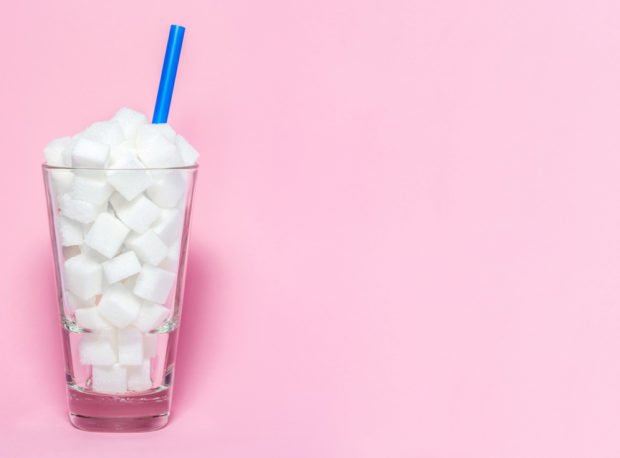Sugar can be found naturally in foods or when it’s added to processed foods. Although they may all have relatively the same sweet taste, not all sugars are the same. Also, some can definitely be more damaging to your health. All sugars help in providing energy. However, one significant difference is the way in which the body reacts to each of them, particularly how they’re digested.
A sugar breakdown
Sugars are categorized as monosaccharides or disaccharides. Monosaccharides and disaccharides are two kinds of simple sugars, which are a form of carbohydrate. Monosaccharides are made up of one sugar molecule, and they are easier to break down. This means that they are available for energy more quickly than disaccharides, which are made up of two sugar molecules. Glucose and fructose, which are two of the four main sugars we are going to discuss, are monosaccharides. Lactose and sucrose, on the other hand – which are the two main sugars – are disaccharides. Sucrose is composed of glucose and fructose, whereas lactose is made up of galactose and glucose.
Glucose
The body uses glucose as its main source of energy and, unlike fructose and sucrose, it doesn’t particularly have a sweet taste. It can be found in a range of foods that include pasta, cereal grains, legumes, and vegetables.

Glucose is often referred to as blood sugar as it circulates in the blood. When we consume carbohydrates, the body breaks them down into glucose either to be used as energy or to be stored in the liver for later use. Insulin is needed for glucose to enter your cells (and later used for energy) thus the secretion of insulin is in reaction to the elevated blood glucose levels. However, continuously elevated levels of glucose can harm insulin metabolism and this can lead to serious health issues such as diabetes and heart disease.
Fructose
Fructose can be found naturally in fruits, vegetables, and honey. However, it can also be found in soft drinks and fruit-flavored drinks after it’s been added as high fructose corn syrup. It has the sweetest taste out of all the sugars. When processed, fructose is sourced from sugar canes, sugar beets, and corn. High-fructose corn syrup is made from corn-starch and contains 55% fructose and 45% glucose.

Fructose is metabolized in the liver and the liver has to convert it into glucose before it can be used for energy. As it’s metabolized in the liver, blood sugar levels aren’t as quick to rise. However, excessive consumption of fructose (often in the form of high-fructose corn syrup) affects the speed at which the liver can process it. As a result, excess fructose is stored as cholesterol and triglycerides – the body’s main form of fat.
Although moderate consumption of fructose has yet to be proven as detrimental to one’s health, several studies have linked excessive consumption of high-fructose corn syrup with serious health problems such as insulin resistance, type 2 diabetes, obesity, fatty liver disease, high cholesterol, and metabolic syndrome. Furthermore, it has also been linked to a lower risk of satiation after a meal.
Sucrose
Sucrose is the most common form of sugar as it’s also referred to as table sugar. It is a disaccharide – chemically consisting of glucose and fructose. It can be found in some fruits and vegetables as well as grains. When added as a sweetener to processed foods such as ice cream and soda, it’s often extracted from sugar cane or beets. As it is a disaccharide, the body needs to break down sucrose before it can properly use it. Once sucrose is consumed, it is broken down into glucose and fructose. As always, glucose is immediately used by the body for energy. Whereas any excess fructose not needed for energy will be stored as fat.
Lactose
Known as milk sugar, lactose can be found in dairy products, although it is often added to bread, baked goods, and processed snacks. Being a disaccharide, lactose is broken down into glucose and galactose. It is broken down by an enzyme called lactase. Lactose intolerance occurs due to your body’s inability to produce lactase.
Which is best for you?
While each sugar affects the body differently, it would be difficult to completely cut all forms of sugar out of your diet; especially since some are naturally present in foods that are rich in vitamins and nutrients. Added sugars, on the other hand, are free of vitamins and nutrients.

Moving forward, the best thing to do would be to limit your intake of added sugars. The World Health Organization recommends a 5% daily intake of added sugars, which equates to, roughly, seven teaspoons. This seems pretty simple until you realize that a can of soda can contain at least 8 teaspoons of added sugar. Moreover, sugars are also added to not so obviously sweet foods like condiments and frozen foods. The most effective way to cut down on your consumption of added sugars is by increasing your intake of whole and unprocessed foods. Furthermore, by reading the ingredient list, you can now recognize which type of sugar you’re about to devour and thus make your life perfectly sweet. Click here to find out more about the studies.
Want to know which sugar substitutes are best? Click on the link to find out.


![women [longevity live]](https://longevitylive.com/wp-content/uploads/2020/01/photo-of-women-walking-down-the-street-1116984-100x100.jpg)










